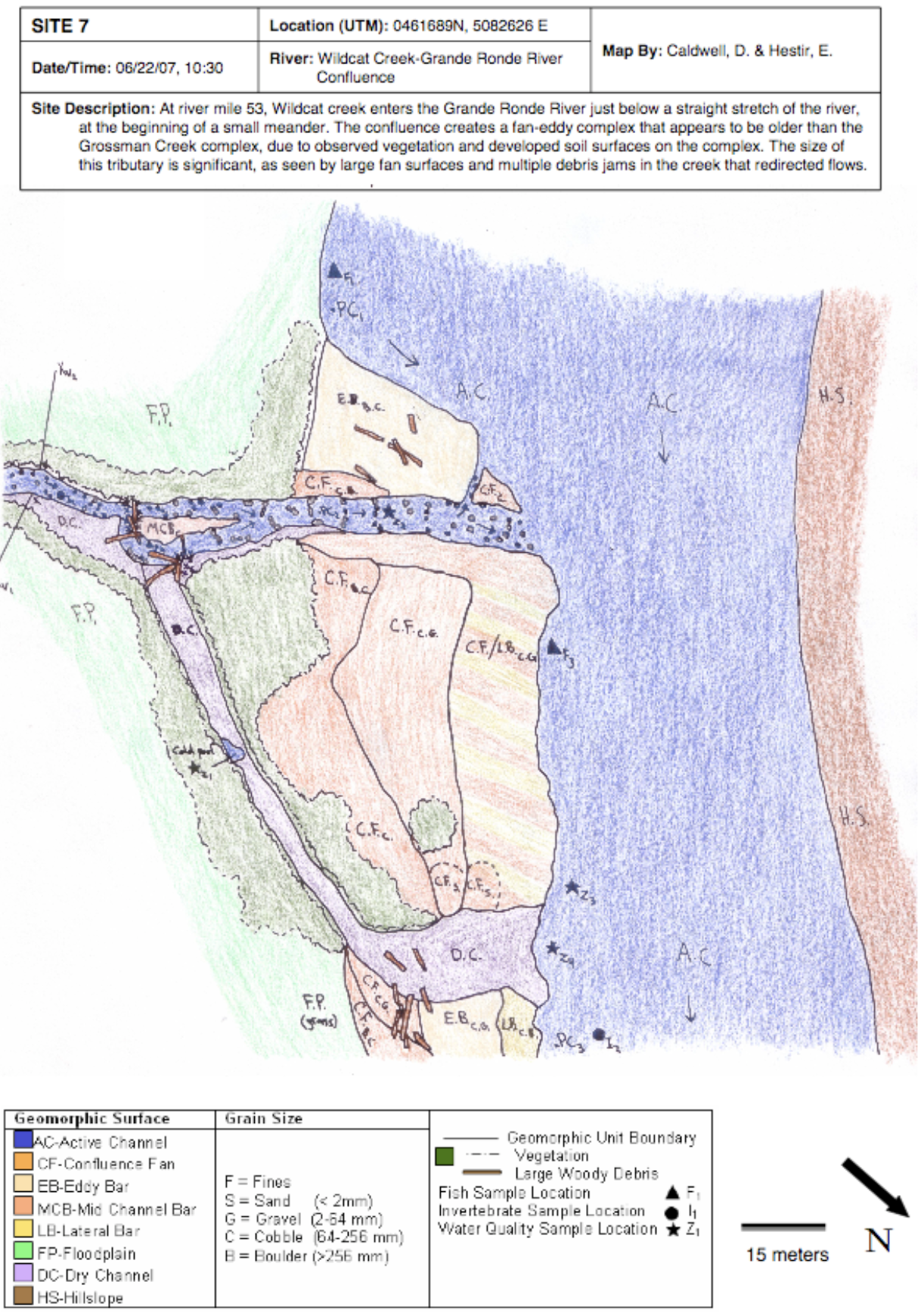Grossman creek, a third order stream, enters the Grande Ronde at approximately river mile 63. It flows from a source elevation of 1269m to 609m, draining 112 km2 over a course of 20.5 km. The creek confluences with the Grande Ronde River on river right, near the apex of a meander bend below an approximately 1.5 km straight stretch. During significant flow events, high velocity flows on the outside of the meander have carved out large cliff faces on either side of Grossman Creek. These same flows are responsible for transporting cobbles and boulders of the creek’s debris fan and re-depositing them downstream as a reattachment bar.
The creek’s debris fan structure is essentially a delta. Large boulders have been deposited at the mouth of the creek. A decrease in carrying capacity of the creek has resulted in an accumulation of boulders on the upstream side of the debris flow, and the transportation and deposition of smaller cobbles on the downstream reattachment bar. This deposition of large sediment at the mouth of the creek has created an effective delta, replete with multiple channels (one of which is active during our visit). Due to the location of the confluence, this tributary does not have a significant geomorphic effect on the river.
In contrast, the confluence of Wildcat Creek with the Grande Ronde River is situated at a location that allows it to exude a much more significant geomorphic effect on the Grande Ronde. Wildcat Creek enters the Grande Ronde River 10 river miles downstream of Grossman Creek at the end of a straight stretch on river right. It too is a third order stream, draining from a source elevation of 1333m down to 536m at the confluence over 26 km. Its watershed area is 170 km2. Due to the substantial size of Wildcat Creek, it has produced a fan-eddy complex that extends into the Grande Ronde, constricting the channel.
At the midpoint of the fan-eddy complex, the channel width constricts to nearly half the width of the river immediately upstream. Upstream from the complex, a mid-channel bar has formed at the bend in the river. We speculate that this is caused by the slowing of flow by the influence of the beginning of the fan. This is further supported by the presence of a riffle on the outside bend of the river.
On the fan itself, immediately downstream from the mid-channel bar, an eddy bar has formed, with deposits of large woody debris and a sorting of sediment. We also speculate that there are additional eddy structures forming in this complex based on the presence of fine grained (sand/gravel) sediment. However, it has been reworked, and influenced by outflow from the creek, making these features less distinct. In general, large woody debris on the downstream side of the complex is oriented along the creek bed, indicating the creek as the transport mechanism, rather than eddies from the Grande Ronde. This supports our initial observation that this creek is more substantial in size and influence than Grossman creek.


